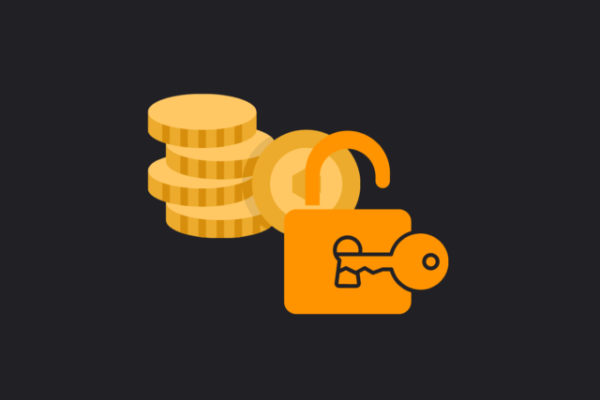What You Need to Know About the Ethereum Update

The Pectra update was the largest technical change in Ethereum since the network switched to the Proof-of-Stake algorithm. It was activated on May 7, 2025, and combined 11 so-called EIPs — proposals to improve the protocol. The update underwent a series of tests in Ethereum test networks (Holesky, Sepolia, and Hoodi), and is now officially operational in the main one, writes RBC Crypto.
The developers call Pectra a preparatory stage for the next major updates, but it is already changing the rules of the game: it makes wallets smarter, validators more efficient, and L2 networks faster and cheaper. We tell you about the key changes and explain in an accessible way how they will affect users, projects, and infrastructure players.
Important terms to understand: EIP (Ethereum Improvement Proposal) A proposal to improve the Ethereum protocol. It is in the EIP format that changes to the network code are formalized. Each EIP is discussed, tested, and, if approved, included in the network update. Smart contracts Programs that run inside the blockchain. They are executed automatically when specified conditions are met. They are used to exchange tokens, launch DeFi protocols, create NFTs, and other actions without intermediaries. Rollups and second-level networks (Layer 2, L2) Ethereum scaling technologies. They process transactions outside the main network (off-chain), and then publish compressed data to Ethereum. This reduces the load on the blockchain and makes transactions faster and cheaper. The most famous examples are Arbitrum, Optimism, Base, zkSync. Execution layer / Consensus layer Two layers of the Ethereum architecture: the execution layer is responsible for executing transactions and running smart contracts, the consensus layer is responsible for finalizing blocks and the order in which they are included in the chain. Blob / Blob space Temporary data storage for Layer 2 networks. Used by rollups to publish transactions in the Ethereum main network, helps reduce fees and speed up processing. Staking / Validator Staking is blocking ETH to support the network. Validators are participants who confirm transactions and form blocks, receiving a reward for this.
EIP-7702. Account Abstraction and Smart Wallets
One of the main innovations of the Pectra update was the implementation of the account abstraction principle. This means that regular wallets (for example, Metamask) can now perform the functions of smart contracts. In practice, this gives users more flexibility: applications are able to take a commission not in ETH, but in another token, for example, in USDT. If earlier to exchange USDT you needed to have ETH on your balance to pay the commission, now you can carry out the transaction by paying the commission directly from the funds that you already have in your wallet.
It is also now possible to combine multiple actions into one transaction (for example, approval, exchange and sending tokens). This saves time, reduces fees and simplifies working with DeFi protocols.
In addition, the new features will allow for more familiar scenarios to be implemented: authorization via Face ID instead of a password, access recovery via trusted persons, and other functions that users of regular applications are accustomed to. According to the developers, all this makes Web3 closer to the experience of the mass user.
EIP-7251. Efficient Staking for Large Participants
Previously, on the Ethereum network, one validator could accept a maximum of 32 ETH for staking. Anything above this limit had to be divided into separate “slots” — essentially, creating new validators. This made life difficult for both institutional players and those who ran their own nodes. With EIP-7251, the limit increased to 2048 ETH per validator.
Why is this necessary? For example, if a large platform wanted to stake 3,200 ETH, it used to have to create 100 separate validators, each with its own set of keys, monitoring, and infrastructure. Now it can do with just two. This reduces the load on the network, simplifies maintenance, and reduces costs.
For the average user, this may not seem like a big deal, but in practice, it’s a productivity boost for large players: exchanges, staking services, or DeFi platforms. It’s easier for them to manage client funds, which means they can offer better terms, onboard new users faster, and experience fewer technical glitches.
EIP-7691. Less Commission for Second-Level Networks
This update directly affects users of so-called rollups like Arbitrum and Optimism, which work on top of Ethereum as a second-level network. It increases the volume of special “blobs” — temporary data storage that L2 networks use to publish their transactions to the main blockchain. Now there can be up to nine such blobs in one block instead of six.
What does this mean in practice? When you use cheap L2 networks, such as exchanging tokens on Arbitrum, your transactions are eventually published on the Ethereum mainnet. The more efficiently this data is packaged, the cheaper the transactions are. Increasing the blob limit means more space for such transactions. Accordingly, fees on L2 networks will become lower and more stable, especially during peak hours.
This is especially important as rollups become more popular, and are already becoming the primary way to interact with Ethereum. With EIP-7691, projects will be able to scale faster, and users will be able to spend less on fees while maintaining the same speed and reliability.
EIP-7002. Managing Withdrawals via Smart Contracts
This update makes validator transactions more flexible and secure. Previously, exiting staking and withdrawing funds required the participation of consensus-level keys, which must be constantly active and online. This created risks: if such a key was compromised, an attacker could influence the validator or withdraw funds.
With EIP-7002, it became possible to manage validator exits and withdrawals through the execution layer — the part of Ethereum that is responsible for regular transactions and smart contracts. Now, exiting staking and withdrawing funds can be initiated through regular transactions or built-in smart contract logic.
This is important for staking services and large players who need to manage dozens or hundreds of validators. Instead of relying on hot keys, they can set up a more secure and transparent exit procedure, for example with delays, multi-signature or other security measures.
This doesn't directly impact the retail user experience, but it does improve the security of the entire system in the long run. This is especially true for decentralized services that build products on top of Ethereum and manage validators on behalf of users.
EIP-6110. Quick Start of Validators
Previously, after a staking deposit, it took up to 12 hours for the network to process the request through the consensus layer. EIP-6110 moves this function to the execution layer, and now new validators are activated in just 13 minutes.
For large staking pools, this means the ability to more precisely manage liquidity flows: validators can be launched in near real-time, which is especially important during spikes in staking interest or significant market movements. It also simplifies the implementation of features such as auto-deposits and instant distribution of user funds.
Regular users may not notice this directly. But in the future, it creates the basis for services where funds are automatically staked immediately after replenishment, and activation occurs almost without waiting. The improvement also reduces the technical load on operators, which is important, for example, for large pools that process many applications in real time.
Internal improvements
The Pectra update includes a number of improvements that do not directly affect the user interface, but make the network faster and more stable.
EIP-2935 allows smart contracts to access recent block hashes without relying on external services. This is important for oracles and cross-chain solutions.
EIP-7623 makes storing data in a regular format more expensive to encourage projects to use the “blobs” mentioned above. This helps to relieve network congestion and reduce fees.
EIP-2537 speeds up the processing of cryptographic operations (particularly BLS signatures) used in staking. This reduces the load on the network and can reduce costs for infrastructure providers.
EIP-7685, EIP-7549, and EIP-7840 make improvements to the Ethereum architecture by optimizing interlayer work, increasing stability, and making fee calculations more predictable.
Источник: cryptocurrency.tech



